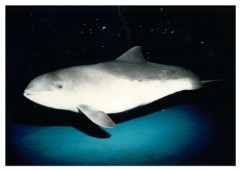Chronik XXXXVI
74. Chronik XXXXVI Beobachtungen und Meldungen 2024
Samstag 24. Februar 2024: ECS Talk über den Krieg in Gaza
The implication of the proposition here is that all structured societies, from car clubs to universities, should take a stance on all major issues, regardless of whether they fall within the society's area of focus and expertise. Where are all these bodies, including the ECS, on huge death rates in recent years in Congo, in Darfur, the crises in Sudan, Tigray, Iran etc? How much has each contributed by its corporate inaction?
The ECS is not obstructing any action any of wish to take in relevant ways on any of these issues, and I do not think the ECS should take a position on this ... and meanwhile none of the other bodies will take a position on cetacean bycatch.
Nick Tregenza
Kommentar: Dem ist nichts hinzuzufügen!
Freitag 23. Februar 2024: End of Fish Day 2024 so früh wie nie zuvor:
Sehr geehrte Damen und Herren,
anbei sende ich Ihnen eine Einladung zu einer Hybrid-Veranstaltung anlässlich des End of Fish Day 2024 so früh wie nie zuvor mit der Frage: Hat die Küstenfischerei in Nord- und Ostsee noch eine Zukunft?
Mit freundlichen Grüßen und fair winds
Uwe Sturm
Sprecher Arbeitskreis Fischerei AktivRegion Ostseeküste
Sehr geehrte Damen und Herren,
am 29. Februar 2024 möchte Fair Oceans Sie gemeinsam mit Brot für die Welt und Slow Food Deutschland in das Bremer Übersee-Museum und auf Zoom zu einem Gespräch über den End of Fish Day 2024 und die Zukunft der Fischerei einladen.Mit freundlichen Grüßen
Kai Kaschinski Einladung zur Hybrid-Veranstaltung
End of Fish Day 2024 so früh wie nie zuvor

Donnerstag 22. Februar 2024: NDR - Delphine begleiten Segler in der Kieler Förde
Das Schleswig – Holstein Magazin hat gestern abends zwischen 19h30 bis 20h berichtet, dass zwei Segler auf der Kieler Förde von Delphinen begleitet wurden. Allerdings handelt es sich dabei nicht, wie ein Experte zitiert wird, um Gr0ße Tümmler Tursiops truncatus (Montagu,1821), sondern um Allgemeine Delphine Delphinus delphis Linnaeus 1758.
Zuletzt hielt sich ein jugendliches, weibliches Individuum dieser Art vom 15. April 2020 bis 28. Januar 2021 ständig an einer Sperrgebietstonne in der Eckernförder Bucht auf und nahm schließlich, nachdem sie fast täglich von vielen Tauchern besucht wurde, ein tragisches Ende (s. a. 54. Chronik XXVII bis 57. Chronik XXXI).
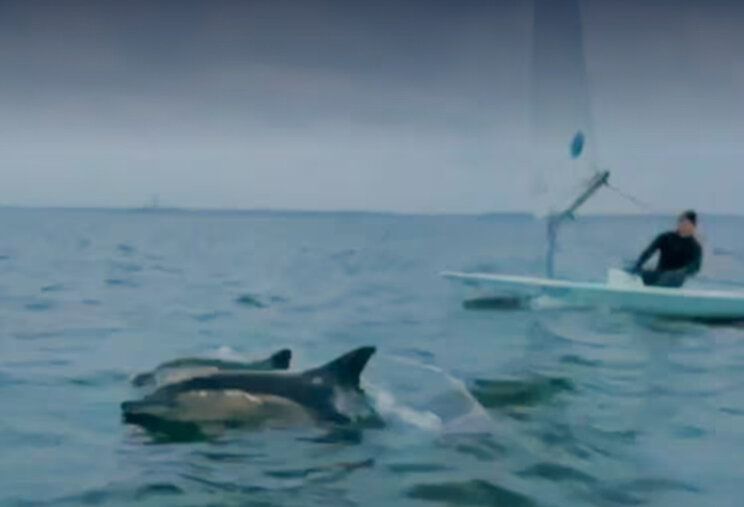
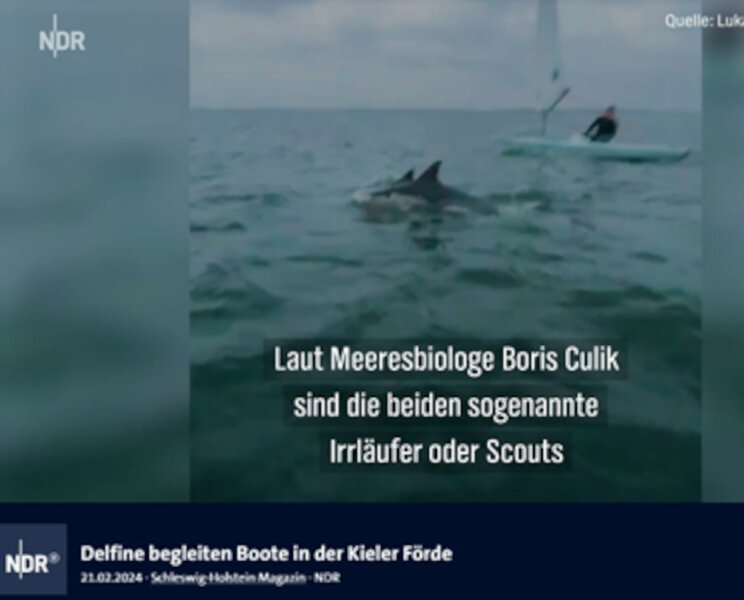
Sonnabend 17. Februar 2024: shz – Nur noch wenige Hundert Tiere: Besserer Schutz für Ostsee – Schweinswal
Shz 17. Februar 2024 Schleswig- Holstein A Seite 8:
Der Gewöhnliche Schweinswal sei in der zentralen Ostsee und vor der Iberischen Halbinsel vom Aussterben bedroht, hieß es auf der Tierschutz-Konferenz im usbekischen Samarkand. Die Population in der zentralen Ostsee umfasst demnach nur noch wenige Hundert Tiere.
Der Ostsee-Schweinswal bekommt besseren Schutz. Er sei in den Anhang I des Übereinkommens zur Erhaltung wandernder wild lebender Tierarten (CMS) aufgenommen worden, teilten Tierschutzorganisationen am Donnerstag zu einer Entscheidung bei der CMS-Tagung in Samarkand (Usbekistan) mit. Dadurch erhalte die Population des kleinen Wals die Einstufung als vom Aussterben bedroht und Notfallmaßnahmen zur Rettung könnten ergriffen werden.
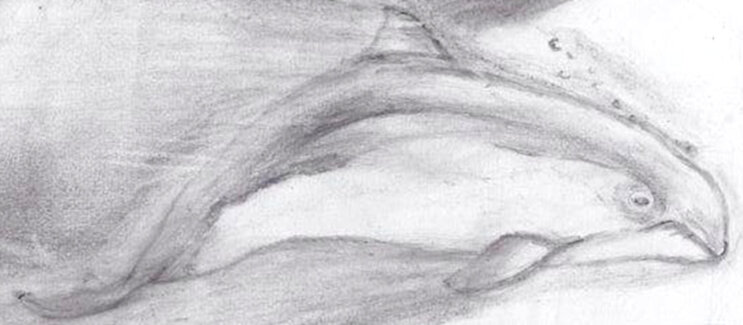
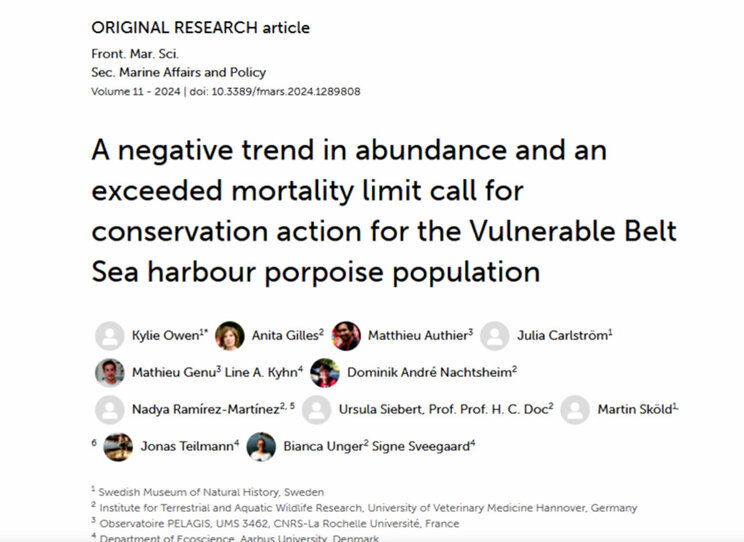
The management and conservation of biodiversity relies on information on both the abundance of species and the potential impact of threats. Globally, one of the largest threats towards marine biodiversity is bycatch in fisheries. Under the Marine Strategy Framework Directive (MSFD), EU Member States are required to assess the status of species, such as the harbour porpoise (Phocoena phocoena), in relation to their abundance and mortality due to bycatch every six years. The Vulnerable (HELCOM) Belt Sea population of harbour porpoise has been surveyed to determine its abundance six times using dedicated aerial or ship-based line-transect distance sampling surveys. Here, we estimated the first trend in population abundance over an 18 year period (2005-2022). Using the most recent abundance estimate, we computed a mortality limit applying the modified Potential Biological Removal (mPBR) method based on the regionally agreed conservation objective to restore or maintain 80% of carrying capacity over 100 years with an 80% probability. Over the past 18 years there has been a strong negative trend (-2.7% p.a.; 95% CI: -4.1%; + 1.3 %) in abundance, with a 90.5% probability. The mortality limit was estimated to be 24 animals, which the current bycatch estimates (~900 porpoises/year from the commercial Danish and Swedish set net fishery fleets, with no data from Germany and other fishery types) exceed by far. The frequency and quality of data available on abundance for this population are higher than those available for the majority of marine species. Given the observed population decline and likely unsustainable levels of bycatch, the results presented here provide a strong basis to make informed, evidence-based management decisions for action for this population. Such action is needed urgently, before the dire situation of other porpoise species and populations around the globe is repeated.
Kommentar: Der dramatische Rückgang der Schweinswalpopulation erinnert stark an das Aussterben der Vaquita Phocoena sinus (Norris & McFarland 1958) ursprünglich ca. 5 000 in den 90ern noch ca. 100 jetzt weniger als 30 betrifft
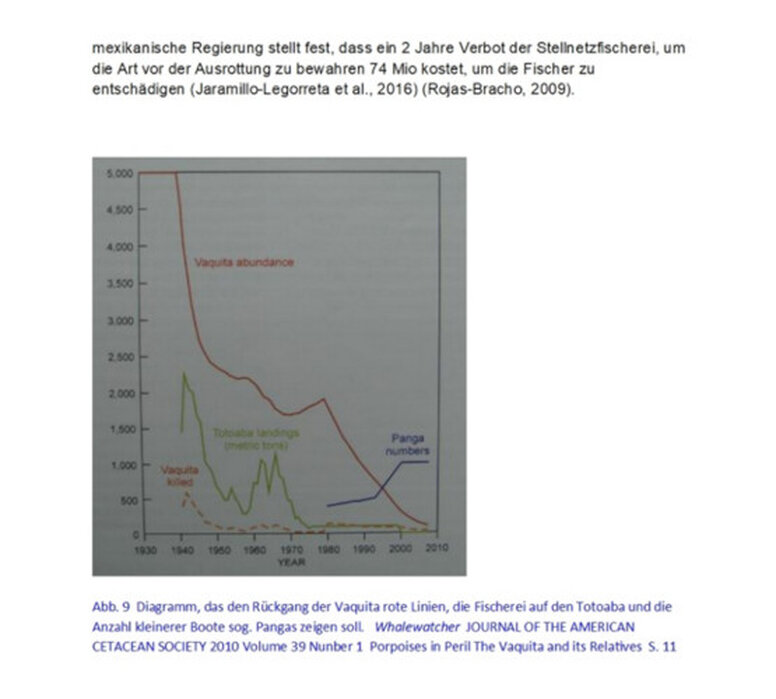
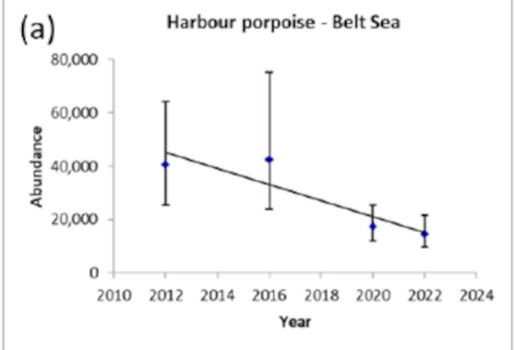
Diagramm aus JOURNAL OF THE AMARICAN CETACEAN SOCIETY Whalewatcher 2010 Vol.39 No.1 daneben Graphik aus SCANS IV (Gilles et al. 2023)
2014 wurde eine Bilanz des SAMBAH Projekts in Kolmarden SE vorgestellt, danach bestand die Population der zentralen Ostsee nur noch aus knapp 500 Individuen (Koblitz et al.). Mindestens ebenso beunruhigend ist der Rückgang der sog. Beltsee Population um 4.1% pro Jahr, von 40 750 im Jahr 2012 auf 14 430 2022 (SCANS IV 2023).
Kommentar: Gründe für das Aussterben der Vaquita waren der unbeabsichtigte Beifang in Fischernetzen.

